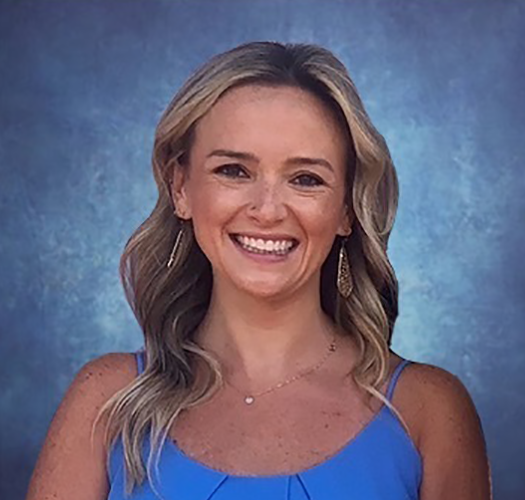Note: If you have questions, or would like to share your input on verified, branded calling, we invite you to participate in our product survey.
Download the Branded Calling Slide Deck PDF
Learn about Branded Calling
Companies like yours invest a lot of time and money shaping and controlling their image, from when their brand logo is researched and selected to how their brand is represented in every piece of marketing. But all of that goes out the window when placing phone calls, where your brand might appear as unknown, spam, or scam likely. Which of your customers will answer your calls under those circumstances?!
Caller ID mitigates some of the issue by labeling the call with the brand that officially owns the phone number, but it might not be accurate and it doesn’t have any other representative brand characteristics, such as a logo. What’s a business to do?
Fortunately, branded calling is now available, following the CTIA’s stringent “Zero Trust Framework” industry guidelines for verifying a brand’s identity up front and then delivering it with the appropriate name and logo. Watch now as Commio CTO and co-founder Michael Tindall provides an overview of:
- What exactly branded calling means, its advantages over CNAM, how it eliminates fraud, and what it looks like in action
- Behind the scenes—how the framework verifies each caller and ensures 100% accuracy
- Qualifications for branded and verified calling, and whether your brand is eligible
Optimize your calling ROI—Watch now to learn more about branded and verified calling!
Webinar Transcript
Tim McLain and Michael Tindall introduced a new telecom solution aimed at restoring trust in business calls by ensuring secure and verified identity presentation. The solution, which replaces existing branded caller display services from Verizon, AT&T, and T-Mobile, uses a vetting process involving KYC forms and two-factor authentication to verify brand identity. It integrates with major wireless providers, including T-Mobile and Verizon, and offers features like spoof protection and the ability to include reasons for calls. The product is set to launch in early 2024, with a pilot program starting soon. The session concluded with a Q&A addressing technical details and future roadmap.
All right, everybody. Welcome to today’s Telecom Wise Guys webinar from Commio. My name is Tim McLain. I’m the director of marketing and super excited to be with you. Before we dive into today’s really exciting session with some groundbreaking stuff to show you all – industry first type stuff, which is pretty rare. I’m very excited to be able to present it with you. I did want to say that we are obviously recording this session, and we will be sending out the recording pretty quickly, either by the end of the day or early tomorrow, and we really encourage you to ask questions as we go use that chat box, and I’ll be monitoring that in real time. And we’d like to make this as conversational as we possibly can. So bring your questions, bring your thoughts, and we’ll interweave that into our discussion. So with that, let’s jump in. As you know, today’s session is called “Your Business Calls: All Brand, No SPAM,” and that’s not hyperbole. You know, we live in an ecosystem today where most people have one of these and they don’t trust the calls that come in to it, or, shall we say, also, even the messages. But today’s content is around voice, and I’m really excited to say that this whole notion of identity and trust and brands has all finally evolved and come together into a new way, a new solution that we think solves for those problems and will allow you to earn trust with your customers and help you deliver more calls, have more interactions. And I don’t want to get too far ahead of myself, but first, I want to introduce Michael Tindall. Mike, so excited to have you here today. Mike is our co-founder and chief technology officer, welcome in, Mike.
Thanks. Great to be with you.
Yeah, and by the way, a mini apology here for today. When we scheduled this webinar, we had no idea it would be the highest traffic day for Commio in our history. So I know you’re watching a lot of gauges and pressure monitors, and hopefully everything holds together during our 30 minutes or so together. Good, good. Now it’s exciting. It’s exciting to introduce an entirely new product into a ready and waiting and eager ecosystem at the same time while the company is literally hitting on all cylinders with traffic. It’s rare that we get to do those things simultaneously. So that’s awesome.
That’s awesome. So something’s happening today.
I don’t know. You tell me!
I stay in my little bubble. I don’t know what’s going on in the world. Okay, with that said, let’s just jump right in. So just dovetailing on what I was talking about, Mike, you know, we can all agree on this call that customer trust, unfortunately, with a lot of communications, is just, it’s just gone. There’s a lot of fraud, a lot of suspicious calls trying to be delivered. Some of them make it and, you know, just we would agree that most Americans, you know, today just don’t trust caller ID, right?
Absolutely not. I mean, you think about the relationship you have with this device, and for me, it’s sort of a love-hate relationship. I love it because I can reach out to the world and dump my agenda out there in terms of emails and Slack messages and all of that, and do research and educate myself and catch up on what’s happening. That part’s fun, but the flip side of that, it’s like, I hate it when this thing goes off these days, especially the last couple of months or weeks. You know, I probably get 30 messages from unknown people a day. Same thing with calls, and it just over time creates a sort of worn-down negative experience. And I miss calls all the time from people I actually want to talk to, whether it be a service company because I’ve got somebody coming to fix my HVAC system and they need to confirm with me when they’re going to be here, but I don’t know their number, and I don’t know who they are, so I end up a lot of times just dropping those in the dirt. And I miss them, and then sort of beat myself up about it, and it’s really sort of the impetus of like, this is broken. This is a fundamentally broken ecosystem. And then it’s like, We’ve got to fix this. But how, right?
So I think we want to talk about the how here in just a few slides, but the main point is establishing an identity and restoring or creating trust. You know, I would argue that trust in this ecosystem has been steadily declaring for the better part of 15 years. You know, since the advent of mainstream adoption of voice over IP, but not just with companies and brands and people, but with bad actors, right? They just came pouring in. You. And now we have a challenge of differentiating. How do we differentiate between what’s legitimate and what is not? What is the source of identity? When is it right? Is it a phone number that can’t be right? I mean, phone numbers are ephemeral. I can buy them, disconnect and change them. I can make phone calls without even owning the phone number, right? And, you know, don’t think for one second Stir Shaken is going to save you from that. And Stir Shaken isn’t a part of the trust ecosystem, really. All it’s saying is, how well do you know this customer, not is this information correct? Are they allowed to do this, you know, etc. And we’ll get into deeper components of that, but I would argue that it’s not far enough.
Yeah, it’s not so today, like we will admit that there, you know, you already mentioned Stir Shaken, but there are some technologies that people point to that should have helped to solve some of these issues around identity. And you know, that starts with caller ID and CNAM, right? But we all know, unfortunately, there’s a lot of spoofing going on.
And what is CNAM? Right? Yeah, it’s a one to one relationship between a phone number and some text. Is there one source of truth for that, or are there a bunch of sources of truth for that that are maintained by different entities? And if that’s true, are those entities communicating back and forth the data? No, right? So it is a compartmentalized, sort of broken attempt to try to present a name, right? That’s really all it is. So because of that, once you’ve attached, let’s, let’s just for a second, let’s just say the name is the brand. Let’s just say that. Okay, what’s it attached to the phone number? What can I do? I can make phone calls from your phone number, right, thereby effectively hijacking your brand. That’s not right. That should not be allowed to happen, especially from the perspective of the enterprise of the unity that owns that brand. So there’s just a lack of trust, there’s a lack of synchronization. There’s no real oversight for this, and most of all, in the hands of the enterprises that own these brands, right?
We talked about it when we were rehearsing Mike, like, I’d love that we finally have a solution to what happened to my mother in law, which was she got a phone call from Microsoft about her computer. It said Microsoft, so she trusted it. She’s obviously on the older side. She spent three hours basically being swindled because of these vulnerabilities that are just inherent in the system that we now have a way to to address and get around, which is very exciting. So today, like we would ask the question, you know, what is branded calling today? And that’s to say that there are some early steps right Mike, that people have tried to solve this, this issue, but they still don’t go far, far enough.
Yeah, yeah. There have been over the top sort of out of band solutions for in the market for a little while now, primarily served by the Big Three analytics firms. And they’d also love to sell you their phone number, reputation. Clean up your spam likely, tag that. Oh, by the way, we just went ahead and tagged you. Yeah, the spam likely. So we can effectively extort you to pay us to clean it back up. We don’t think that’s right either. So, you know, they’ll sell you the product. It’ll deliver the name. You know, there’s no policies or standards for betting. There’s no verification. There’s no, like I said, betting process. There’s no verified check mark or any kind of other indicator that goes along with it, yep,
Yeah. It’s really no better than just another way of delivering that name right to the handset. That’s it. But what I love is now, let’s take it to the next step. This is what we’re talking about today, this whole new way to approach it, yeah, and really, this is not, I don’t like the word branded calling this is, this is bigger than that. This is the main purpose here is to establish identity and identity presentation that is secure from end to end. It can be verified by the receiving endpoint or network, right? So, in order to do that, we leverage, you know, sort of the stir shaking framework that exists today and extended it. Um. So it’s built on a zero trust sort of policy. And what I mean by that, we back up to, how does how do you establish an identity? How do you establish the brand? Well, first step in the process, and we’ll go through some graphical representations of this later, but the first step is verification, the KYC component, the vetting component. So for those folks that are already familiar with the process for in the messaging space for registering a campaign with campaign registry, right? You fill out a basically a KYC form. You submit your content. That content is reviewed, the KYC pieces are verified by the vetting agent. In that case, this is all true for this as well.
Okay, so you go through a vetting process with the KYC intake form, or vetting agents verify all that stuff. They go dig through the FBI ends. They verify the website. You have to have a business contact email, preferably of an officer or someone authorized to work on behalf of that brand. That all goes through the, you know, a very similar KYC process to TCR. And then there’s an additional two factor authentication component that requires whatever that business email is to confirm the information that’s being requested to be verified and vetted, and then click it through a two FA so that initiates, sort of, that’s the starting pistol, right? So that’s, that’s what starts the process. And at that point, the vetting agents go and do their work and either approve or reject.
If it’s approved, it moves right through to the next component of the process whereby we attach the CAMEO certificate right as an authorized signing agent to that particular brand, and that enables us, once, that once you pass that gate, Tommy, and takes it from there, right? Well, we take the whole process, but what I’m saying is that’s the point where you can start to make calls with that brand. And come, you know, handles the signing components, the vetting components, etc, and will present this type of content on your behalf based on your authorizations. Once that happens, it goes through, let’s just say it goes to T Mobile, right? You make a phone call to T Mobile, T Mobile would grab that certificate off of the call, they go back to CTIA and verify it. They decrypt it, unpack the payload, check everything, make sure everything checks out. That’s an instantaneous process, by the way, it’s well, it’s all systematic, similar to the way dirt shaking works, right? And then they grab the brand asset, once that’s all checked out, and they’ll display it on the handset.
Yeah, it’s so exciting, Mike, like your example, all the way at the beginning of the call, was you’re missing a lot of calls. So I can imagine if, you know, if Tim’s plumbing was coming out today to your house and you didn’t add them to your address book, you know, you know, as you said, you know, a lot of times it’s the technician’s personal number, right, right? Sometimes they’re not that sophisticated. It’s like, yeah, go out in the field and here’s your appointments for the day. You call them, right, right? But I can imagine then, so if you don’t have to jump through any of those hoops, and your call and your phone lit up and you saw the name of the company and their logo and this check mark verified business call, that’s going to increase, you know, call pickups and delivery and business overall. That’s what this is all about.
Fantastic, just a whole other level. Yeah, it’s about restoring trust, but verified.
That’s right, that’s right, that’s right. So with that, I’d love for you, by the way, because you know, we like to tell you, and then, you know, you know, whatever, and then tell you again, just to reiterate, like the right hand side. Mike, let’s start here, like currently today, when we talk about what branded calling really means. It’s powered by CNAM and caller ID, but, but basically, you know, kind of walk us through, sort of the what’s going on with the with that, you know, system today, and why? Why are those vulnerabilities?
Yeah, we touched on this a little bit in the beginning, talking about the concept and the notion that a phone number is indeed on identity is it can’t be right? I know that it is used that way now, but it’s broken, right? Anybody can intercept that and make calls now, whether depends on, depending on the security or tightness of the controls of the people you know networks taking those calls in, they may reject them. A lot of them don’t. So there’s really a deficiency there in the fact that it’s a phone number based system, that’s right?
And again, it’s just, basically, at the end of the day, it’s just the main purpose is to add a caller name. Um, as an effort to brand that call. But again, it doesn’t always, doesn’t always function that way. But on, you know, on our side with this new solution we’re really talking about, you know, the branded presentation of calls that are directly in your control, right?
And this new logo, and not to be, you know, skipped over the optional reason for calling, right, whether that be billing, account management support, pay me my money, whatever. Right. You know, part of the registration process, so when you go through it, is establishing what your reasons for calling are as well. And those also get packaged up and registered to that brand so that those can be used in this ecosystem. That’s right, you don’t have to, you don’t have to do that, yeah, and last but not least, is this guaranteed spoof protection. So literally, you know, because of the way that the new call delivery system works, you know that spoof protection is built in, which is huge, yeah, because the the major providers in the wireless providers, are participating in this ecosystem too, and they’re committed to this initiative. And, you know, I gotta tell you, it’s been really great working with folks that I never thought I’d have access to. But yeah, they’re, they’re, they’re really excited about this initiative. They’re driving it really, really hard, and they’re highly responsive to our inbound, you know, requests and things like that. So, you know, their their component of is, once they receive that payload, they then do all of the verification components, grab the brand assets the first time they get it. Yes, they have to go to stores to get it, so whether that be in like an s3 bucket or something like this, but once they do that, they cash it on their their networks natively, and refresh those things periodically. But yeah, they’re absolutely a part of this. This is not like coming in through the back door or anything like this. They’re participating, and by the way, not to give it short shrift, but you know, when we kick this off, we mentioned that there are three companies that are trying to provide a similar solution. Now, that’s not as good as this. With this solution, this works with all the wireless providers, right? All of them.
Today, it’s T-Mobile. Verizon is on their heels. I expect when at some point in the next couple of weeks AT&T is right behind them too. They’re probably Q1. Yeah, but that’s why it’s important to start having these conversations now, because we need to start thinking about and preparing for whether or not this is something that’s going to enhance the value of your brand, increase your customer engagement rates, you know, increase customer satisfaction, increase potential revenue and sales opportunities, as well as enriching support. Like I said, if somebody’s away from their desk and our knock is trying to get in touch with them, they don’t have, they probably don’t have our number or numbers saved in their contact was highlighting with us.
That’s right, all right. So let’s go a little bit deeper into into our into our new solution that we’re talking about here. And first, as you already mentioned a lot of this, Mike, but really, this is really based on the most important industry wide standards and standard bearers, owners of standards out there in the ecosystem.
It’s really being, you know, orchestrated and managed and and maintained by CTIA, right? So they’re a huge component in this ecosystem. So is Google, right? So there’s a lot of weight, you know, being put behind this initiative.
That’s right. So, and by the way, I also love this, this bullet mike on your slide here we because we already covered most of this content, but also beyond the industry, collaboration is confirmed call delivery, including monthly call reporting. So it’s a lot like text messaging, where you can get dlrs delivery receipts of your sent messages, but calls, right? Yeah, and it’s important to understand you may not want to brand every call, right? Maybe you only want to brand your most important calls, or the ones that you know are official company business, not like Tim sitting there at your extension. You may want to do them all. It’s there are controls in place to allow you to select back and forth if you want to attach the brand to a particular column. Yeah, that’s great. And getting that data is really important too. Yeah, I get it. So again, we sort of talked through the vulnerabilities of the current out of band call delivery offerings out there, because sort of at every link in the chain there are security issues. They’re all insecure, right?
Yeah, because it’s phone number based at any point in time, you can inject what you want, and there’s no, there’s no, there’s no, there’s no. Making sure there’s no certificate, there’s no you know payload that contains the brand assets, that contains your, what’s called an ecosystem Enterprise ID. Oh, by the way, when you get registered for your brand, you are assigned an Enterprise ID that’s unique. We manage all of that so that when we sign those calls, we include that data in our payload, and that’s what we’ll talk about wireless folks in future webinars. My mind’s going nuts with the application for this as it relates to connected software applications, to receiving calls, and the power of what you’re going to be able to do when you get that payload, right? So very exciting things are coming. I’m very, very excited about this. Yeah, and Joe, by the way, sorry, Mike, Joe just has an interesting question, which I think I was alluding to a second ago, which is, you know, does this solution replace the Verizon AT and T, T Mobile branded caller display that they currently sell? Would this replace it?
Yes, it does, for sure, and by the way, and Joe, we’ll follow up with more details about, you know, going a little bit more in depth into the product, or sort of the details that we do have, versus the ones that are coming as we go a little bit farther along. But that’s a great question. Yeah, and my intention is to get the information out there so that folks can start digesting it, understanding it, getting comfortable with it, if it’s something that is appealing to them. And I want to do a whole series of fast follow ups on specific topics. So really sort of set in the kitchen table here, and really excited to see after folks sort of consume it, digest it, form their own opinions, questions, etc, really crafting some content around that to help folks, you know, get comfortable and make sure they understand everything.
Yeah, and Joe, by the way, a couple other good questions in here, but I’m going to save them as we don’t have much more to go through. And then we’ll get to everybody’s questions in real time while we have Mike with us. So great questions coming in already, Mike, so I’m excited to see the activity, but let’s skip ahead. So if we go from we all agree that today’s system is insecure and relatively broken, and now with this new in band call delivery that we’re offering.
You know, every step along the way is secure, right?
That’s absolutely right. And it starts with, I can direct your eyes to the bottom part of the screen. You start on the left hand side. This is really the gate right. This is, this is the vetting agent process. This is the KYC intake process. You know, there’s going to be some forms that go back and forth. I mentioned the two factor authentication to the business email. All of that happens within sort of these two steps. Once those gates are passed, we get the Enterprise ID, we get our certificate authorized to sign for that brand on their behalf, and then Kanye handles the rest. So when you send us a call in, you indicate whether or not you want it to be branded or not. If not, nothing happens. It works as it does today. If yes, then we go through the process of signing it and delivering all of that rich content in the payload to the terminating service provider. That’s right, that’s right. That’s like, your part’s kind of done at that point, right? All you have to decide is, do I want this brand internet?
By the way, Mike, I always smile when I see this example down here, because I remember when you called me, I think you just had a couple two Saturdays, three Saturdays ago, when you were testing and I’m like, Oh my gosh, look, that’s, that’s our logo! That’s awesome! Mike’s got it working. Yeah, I want to. I wanted to freak out the marketing guy. It worked. I was like, I want that. I want I want to. I want to help people get that. Hell Heck yeah, heck yeah. Anyway, could the logo be any bigger, Mike, I mean, it’s actually very big. I like it. It’s pretty awesome.
Yeah, they’re, they’re sizing dimensions and things like that. And I actually want to clean this one up. This is the first one I made through, yeah. And, you know, yeah, we’ll have, we’ll have brand asset guide sheets so you can size things however you want them, format them, you know, so they’re compatible, yeah? But, to be straight, Mike, I want to you’re, you’re, I’m glad you brought this up when we were planning this. Like we’re never going to show you a mock up. This is a real screen capture from the phone.
Yeah, yeah. We don’t do mock ups. I mean, it breaks the whole concept of trust identity, right? Why would I show you something that’s not real? Well, said, yeah, in this case, oops, almost knocked over. You can see that I did not, I did not include reason for calling on this because I just didn’t want to. But it’s just an additional field, and it’ll pop up right under your name, and you can see a little bit better on this slide. You know there is in the case of. So this is an Android example. You know, you’ve got the green verified check mark. This did go to a T Mobile phone. You can see they’ve also stamped it with a verified business call tag. And then, as well as display that, the logo the rich content on the phone. And we actually have an update on this because as of whatever last week, yeah, Apple phones would not display this on the lock screen. You had to have the phone unlocked. You could, you could get the name, but that was about it, and it was a little disappointing. Well, I was very happy to see with 18.1 I almost never do this. I hate upgrading my phone because something always breaks. But in this case, I really wanted to see this work, and Apple actually updated their software. We’re getting these calls just like this on on the lock screen. Yeah, very cool. Very, very cool.
Very, very cool. Yeah, so by the way, just this slide again just reiterates that vetting process on the left, when you go through that onboarding process, again, identity verified, you know, it’s, it’s hand reviewed, and then on the right, sort of this just really shows that that call flow all the way through, from the origin service provider to cameo and out, right? Yeah, really. Slide number five is where the magic happens, right? Well, there’s all kinds of magic happening, but this is where D mobile, Verizon AT and T they’re doing this part of the process. They’re going back and checking with CTIA and validating the certificate, right? Somebody tries to sign it with a certificate that’s not attached to the brand. It’s not going to deliver it, right? That’s the secure component of it. I can’t just say oh, I know these folks are registered with CTIA. I’m going to go ahead and make a call on their behalf, and I’m going to sign it with my certificate. I think it’ll work.
Which Mike, I think, you know, we haven’t even touched on this, but I feel like now’s a great time to bring it up. Is, you know, we realized as a business, that pre-pandemic, we were delivering most of our calls to a business, to a building, right to to an office building, to a handset, you know, that was sitting at a desk or a soft client or something, yeah, yeah. Well, that was that we’ve had this thing called a pandemic, and now everybody’s working from home. We don’t terminate a lot of calls to office buildings anymore. They’re going to the big three mobile carriers in these phones. So that’s why this solution at this point in time is so important, you know, to our to our existing customers and our prospects, because a lot of your calls are going to these handsets, and there’s all these problems right associated with delivering calls with a lack of identity and trust, and this eliminates that, because the as you said, the carriers will not allow the call to pass through, like my mother in law, for example. It was on her iPhone. It said Microsoft that wouldn’t won’t be allowed to go through anymore, which is exciting. Yeah, that’s what we want. Great. So, and by the way, just to really zoom in this is to go through that line by line, Mike that you already did, which, again, I think it’s missing that one item which would be below the phone number, it would have the call reason, right? Yeah, yep, exactly, yeah. You can optionally include reason for calling and, yeah. You know, there are a variety of variety of reasons I can think of why you may or may not want to do that. Maybe nobody wants to answer a call from billing because they know they owe you money. You call it like, right? Free giveaway.
I kept saying that, right? You know, you know what I mean. There are reasons in certain scenarios where you you may not want to include it, and other reasons where you may want to, yeah, exactly, right. That’s great. So all the components are verified. They’re all part of that payload you mentioned, yeah, that’s exciting. And by the way, and you mentioned here, as of, here we go, 18.1 this is how it showed up on my phone. Yeah, exactly, yeah, yeah. So use it, yeah. You see the Apple version on the left and Android on the right, you know, dude, sort of Google’s really deep integration into this ecosystem. You can see some differences, you know? Parity always has a way of catching up in the market. Yeah, Mike, this is exciting because we’ve been talking about other things that you’re working on. I feel like this is the basis for RCS and other things we’re working on. I don’t want to get ahead of ourselves, but this is the foundation for a lot of really cool stuff that’s coming.
Well, you can’t ignore that. I mean, if you’re establishing an ecosystem with the concept of identity and brand and authenticity, why would you stop at just voice so the RCS is, this, is this guy’s little cousin, or probably going to be big cousin?
So similar experience, rich content in your native messaging application without any sort of third party app install required, Yeah, same with this. This is native. There’s no third, you know, third party app you have to download and install on your phone, yeah?
And you get the trust and the brand is. Verified, and the experience is amazing. Like, there’s great things right, right ahead of us. It’s so exciting. It’s amazing time to be part of this. We’re seeing real solutions, finally, to these real problems. So here you go. Here’s the question, how do I get it? So the first thing is, we already mentioned this, that the first step as somebody who’s, you know, setting this up, is you got to verify your identity. So you already went through a lot of these, but it’s like, you gotta verify who you are, you know? And there’s some big, big hurdles you have to jump through to do that. But it’s pretty straightforward, yeah, it’s basically what I just described. It’s a KYC intake process. You’re gonna ask you for a lot of corporate information, right? All the brand assets, all the stuff that they would require to vet your identity, then they go vet it, right? So most of the folks that are in a messaging space are already familiar with this process when they want to run campaigns, yep, very similar. That’s right.
And then this is sort of getting down into, really, more into the weeds. We don’t need to go through all this one for one, but this is literally sort of bullet by bullet, all the different types of information they need for onboarding and vetting to get you ready. It is sort of for later consumption when you’re sitting down and saying, Okay, what did I just hear? I have a question, you know, refer back to this, right?
Exactly. Which is, you know, you get all the way to the end too, which we all know that those four little letters, TCPA, you know, are you in compliance? You know, all these different things that go into it. Again, this is the solution that we’ve been waiting for to be able to trust our phones. It’s really exciting. So with that, Mike, I’m so excited about this. I know you are. We’ve been working on this for a while. You’ve been working really hard on this. Appreciate your leadership, and it’s exciting to be the first to market with this. It does replace some incumbent solutions that are not working as well as they should, that are siloed to each individual mobile carrier. This will take care as they come online, all of the mobile carriers and, yeah, and it’ll take care of this, hopefully start to take care of this issue that’s plaguing this, this ecosystem.
So Mike, is there anything else you want to add? Or let’s jump into the questions we got; it would be great to take a couple. Yeah, well, I apologize before we get to the questions, like, I have the word survey on here. Mike, right? So we’re in the process of putting together a survey. You’ve all taken your time. Thank you for coming out today to to learn more about it. We want to leverage your expertise, your background in this; for instance, are you already buying this product, you know, from one of the those three other folks out there that are selling a version of this? That is, it isn’t up to snuff yet. We want to know about your experience with it. We want to ask you a couple questions, so we’re excited to get that out to all of you as a survey. We’d love to get your input right. Mike, yeah, absolutely. The community is a huge component of what drives our initiatives, our efforts, how we craft content, how we modify or enhance our products. So very excited to get that participation. I know a lot of folks don’t tend to participate in these things, but I’m hoping that this is exciting enough for where you’ll give us, you know, that feedback Exactly.
So let’s go through a couple questions. Mike, I think these are some we can answer, and, by the way, and some details too. Mike, let’s make sure we don’t forget. Let’s give them the timeline, sort of the high level roadmap of what’s going to be coming. So obviously, the product is, it’s not available today, but we’ll give you more of a timeline and a roadmap on that in just a second. But first, yeah, we’re going to be launching, we’re going to be launching a friendly pilot in the next couple of weeks. So we’re going to be reaching out to folks for interest in that piece of the process. Once we receive, you know, sort of those experiences and feedback, we’ll take those into the product, and then we’ll release right around the first of the year. So there you go. We’re going to be, you know, this is live in the ecosystem. Now we’re using it. We’ve got a couple of other folks using it, and we’re going to be extending that pilot, and you’ll see that soon to come. Awesome.
You heard it here first. Heard here first, guys, first of the year. That’s a great, great, great, great thing. It’s going to take people some time to get prepared, right? You’re going to have to design your own sort of strategy for like, how do you want to brand every call? Some calls, what does it look like? Which logos are you going to use? What brand are you going to all of the things that folks, folks are going to have some homework to get organized so they can come ready to play, yeah, which, again, totally reminds me of how we get our folks ready on the messaging side for them to register campaigns properly. You know, get vetted. You know, it was, it was a huge adjustment for them, and there’s gonna be some late adopters but I’m telling you this what this is going to change.
Ecosystem this, this is going to become a table stakes issue. You know, if you’re a legitimate enterprise and you don’t have this, if you What do you JV, like, you don’t have a brand, like, what’s going on? So we’re not there yet. But you know, for those that tend to be late adopters? I’ll tell you that. You know, it’s probably better to try to move sooner than later before it becomes a hot button, you know, reactionary issue?
Yeah, I think once they get to see enough of these calls, it’s going to be, you’re right. It’s table stakes. Everybody’s going to have to have this. So a question from Joe again. He said, Hey, is this only for cameo numbers and cameo terminated calls. Or can we verify other numbers through cameo, even if the calls occur through outside the Commio network?
Yeah, it’s a cameo only thing at this point, and it’s designed that way to eliminate through those multiple paths of entry. It’s like, you know, I know you registered over at com, yo, but I’m going to send it over to this provider, that provider has no relationship with CTIA. They’re not participating in this framework. They can’t sign it. They simply can’t. So, yeah, it’s, it’s a Commio pipeline, gotcha.
And, yeah. He asked too, does this replace the Verizon 18 T and T Mobile branded color display they currently sell? Yes, it does. It does replace it. And then, just this works without that, right? There you go. And he also mentioned, too, how was the price? Is it per registration, per number, per month, per call?
Yeah, there’s a registration component to it. We’re still working on commercials, but yes, there’s a registration component to it, and there’s a per call component to it. So that’s where that key comes in, where we give you the flexibility you can choose active brands on calls, right? We work with, you know, a lot of folks that have been in our development, like cameo labs, kind of ecosystem that we work very closely with, and some of those are banks, and they make a lot of calls, and they don’t necessarily need to brand folks calling from like the executive suite or not customer facing, you know, etc, so that, you know, they’re squarely focused on customer engagement, so their CS teams, their support teams, yeah, you know, more mortgage and credit cards and things like that.
Gotcha, yep, okay. And by the way, more details about sort of pricing and how that all works will be available as we get closer to the launch date, for sure, this won’t be the last time you’ll be hearing from us. Will was asking a question, and I’m not sure if you can answer this one, Mike, but it’s what impact does this have on long standing analytics engines? You know, if you’re using branded caller ID, is that data ignored?
Yeah, this is above them. The mobile providers trust this more than that, so they check this first, if that doesn’t pass, then they go to the solution you just mentioned, and down the chain. Gotcha.
Okay, great. We’ll also ask what data points are required versus optional. It sounds like the logo. And the reason are optional is company, brand, logo and brand. Okay, there you go. He also is asking, Could we use the solution to validate a phone number by itself?
I don’t think so. Okay, gotcha. No, no. Phone number is not an identity in this ecosystem. Phone numbers can be attached to the identity, but it is not the source of truth. Gotcha. Does that make sense? So, yeah, you register your brand, then you say, Okay, these are the numbers I want using this brand, right? And that’s that, right. If you can update, extend that list, drop the list down whatever you want to do beautiful, yep. Will says, Thank you. Totally, totally gets that. And then we’ve got, how would this interplay with spam tagging by carriers and by crowdsource apps?
I like it. I like it. So this will think about what. Why does that happen? They’re polluting the pools on purpose. That’s not No, yeah, well, he’s asking the question. So we don’t expect branded with spam tagging on the same call, no, no, no. So, because, again, this will sit right above all of that, right? It’s fine, vetted, authenticated, I don’t know that you get much more, you know, confident than that. Yeah, and I think most importantly, Mike is just to reiterate, so we’re working directly with, you know, the mobile carriers with the solution. So again, if, if you’re jumping through all these hoops, if you branded the call, if you’ve got the right payloads, you’ve verified your identity, all that’s in place, all those other considerations that were underneath those third party apps that they’re not they don’t matter anymore, because it’s going to ride right into the mobile carriers, because the big three are grabbing back their power.
You know, I mean, it’s happening with this. It’s happening with RCS. They’re going to they’re going to try. Their goal is to rip all of that out of band messaging through WhatsApp and others, out of those applications and back onto their network so they can charge for it, yeah? And that it’s a native, seamless experience for the brand in the customer, right? And they, and they, they want to, they want to play, right? Yeah, well, it’s, honestly, it’s taken them long enough, but they’re here now. So we’re very happy. We’re very happy that they’re here.
Well, hang on this for two years.
Mike man, a long road.
Yeah, we appreciate you. This is super exciting. So anybody else have any other questions now’s the time. Oh, great. Here we go. How would we signal to Commio that we would want to call to be branded based on the Annie that we send or a different data element? Yeah, and this is part of where I want the survey and others, because my, my current thinking is, you know, allowing customers to add a customized X header that just simply says yes or no, or some sort of Boolean, one, zero, something, so that you can control it dynamically. You know, in my thinking, I know a lot of sophisticated customers. They’re like, okay, great, no problem. I know how to do that. Got another cohort of customers, they don’t know how to do that. So we’re also going to sort of have an easy button in the product that just says, Yeah, brand, all these, and I’m not sending you any signals now, you’ll, you’ll lose the individual call control by doing that. But, you know, those are the two. It’s kind of like simple and, you know, customer controlled, gotcha. Gotcha sounds like we’ll have options based on you. You’ll be in your control, just like everything else that we do at coming out, it’s in your control. Yep. Exactly, yeah. Part of our philosophy, our mission statement, everything we do, yeah, which, by the way, my god, yeah.
I’m sorry, yeah. I was just gonna say it strikes me, you know, I’ve been working with you and the team for six years in this role, and it’s still amazing to me when I sit on customer calls and we show our list of our 40 voice carriers, and I see their eyes glaze over and like, there’s so many of our potential customers. Like, we give you the ability to control things down to the call level, to the individual carrier level, to take carriers in route, out of route, today, tomorrow, next week. Like, there’s so much granularity in our controls. And I love that the company was built on the notion that you should have total control. And not every customer wants a response to that, but it’s still, it’s amazing to me that I don’t know, like, I want that control, right? I’m a techie guy too, but it’s important to know that, you know, you’ll have, you’ll have more than one way to control this, and it won’t be completely technical, you know, that’s right. I gotta, I got. I have to serve service, serve everybody, right? So we’ll have options. Yeah.
Oh, and Joe is asking, Will the reason for the call be in the X header two, or is that a phone number setting that gets updated? What do you think? Yeah, so same thing with reason for call. So reason for call has to be registered with the brand. So, you know, we could talk about creating, you know, customer flexibility with X headers. That’s not an incredibly gargantuan task to do. The key thing is making sure that we have consistency and compliance with what was registered with the brand. So we’ll, we’ll, we’ll have to come up with some solutions for that to make sure we maintain that integrity and that relationship to the brand. So you don’t just change it and try to put something else in there. Because even with a space, like if you fat finger a space or a key and it doesn’t match exactly, it’s, it’s not, it’s not going to pass it. So we want to, we want to make sure that every time it’s consistent and and and formatted, you know, in the right way.
Gotcha, gotcha. Well, thanks to everybody for their time. Today, I’m super excited. This is out into the universe. We’ve recorded the session. We’ll be sending the video out. Feel free to share it around. And by the way, I have my email, my personal email, here at the bottom of the slide, so when you get the recording, it’s going to come from me. Please hit reply. If you have questions for Mike. You have questions about the product you want to know more, feel free to reply. And more importantly, when you get the link to the survey that we’re creating, we really want your input. The sooner we can get that, the better. Mike already mentioned, we’re doing like a closed beta here, coming up pretty soon. We’re talking the next few weeks. So yeah, Will. Will says, Thanks for putting it together. We’ve been anxiously awaiting for this day to come. Thank you, Mike. So yeah, thank you, Mike. There we go. Love. Hearing that. Thank you. Yeah, that’s exactly what we want to hear.
We’re super excited about it. We want to hear from the marketplace. So please reply to that, because right now is when we’re kind of tightening these screws down. We want, you know, all of this because, you know, like any product company, we’ll continue to enhance and improve the product over time. But you know, right now we’re sort of closing those lists of requirements for the production release. So you know, if any software developers are on here, you know a product is never done, right? You continue to improve, you continue to refine. You add something and you find something you could delete. From an efficiency standpoint, you got it? Dan says the same thing. Great info. Thanks guys. Thank you, Dan.
So please reply to the email with questions or comments. Fill in that survey, and you know we’re going to use your replies to help sort of shape how we’re going to be communicating with you over time. If you register for this webinar, you’ll be hearing more about the product anyway, so gear up for that. We’re excited to continue to share that information and expand it as we go forward. But Mike, great. 45 minutes together now. Thank you. Thanks again for your time. You can go back to your overheating servers on this important day. There’s so many calls to Texas team, all American man, we have to do everything on the same day, but hey, so we’ll see how things shake out tonight and beyond. And thanks again everybody for attending. And like I said, we’ll be in touch. Watch for that video, fill in that survey. Thanks for your interesting cameo. And Mike, thank you for your time again. So awesome, absolutely.
Join us each month to ask the telecom “wise guy” – a seasoned expert with deep experience in particular aspects of the field. No agenda, no sales pitch, just you, the expert, and your questions answered.

















